Summary
Summary
https://www.zdergisi.istanbul/makale/summary-313
 Anatomy of Horses
Anatomy of Horses
With their athletic anatomy horses have outstanding features as compared to many other animals. They use senses of touching, smelling and hearing for communication. Especially their sense of hearing is pretty more developed as compared to humans. They smell the food before eating in order to recognize it. Their stomachs which are relatively small for their bodies are very sensitive and they can not vomit. If they eat excessive amounts of sugar beet or some other things that puff up and extend in the stomach this may cause their lives to end.
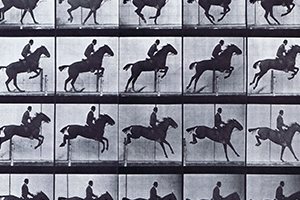 Horse Gaits
Horse Gaits
Reha Gültepe
Horse gaits are named as simple walking, running walk, trotting, canter, galloping and pacing. Gaits like fast walking or pacing which are not natural gaits but taught by training the horses are called as ambling gaits. The most simple gait which can be described as the horse’s each foot stepping on the ground in order is the slowest gait. When the horse extends his neck forward and makes the longest gaits with four taps is called galloping.
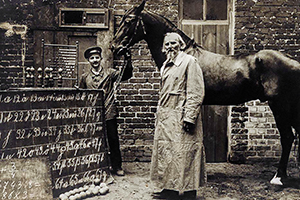 Clever Hans
Clever Hans
Murat D. Çekin
In 1891 Wilhelm von Osten who was a retired mathematics teacher who lived in Berlin began to show the skills of an Orlov Trotter male racing horse named Clever Hans (Kluge Hans) After a four year-long training with carrots and sugar as a prize, Clever Hans was able to make operations, calculate square roots, know the letters in the alphabet, distinguish the musical notes and colors, tell the days of the week and the time, show the places of objects, count the number of persons and recognize people in the photos. The genius of Clever Hans excited scientists and was the subject of an interesting investigation.
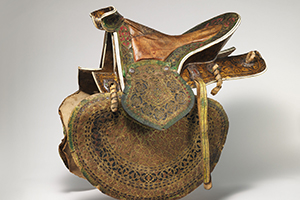 History of Turkish Saddle
History of Turkish Saddle
Halil Tekiner Fahrettin Keleştimur
Saddle was first developed around the eighth century by the Eurasian nomads, who lived largely on horseback. The Russian archeologist Sergei Rudenko’s findings in 1951 in the frozen burial graves of the central Asian nomads at Pazyryk, Siberia, produced actual examples of two types of saddles from the fifth century—the simpler consisting merely of two felt cushions designed to lie on each side of the horse’s backbone and the latter having padded wooden frames to act as a pommel and cantle.
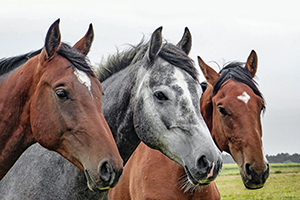 Facial Markings, Leg Markings and Coat Colors of Horses
Facial Markings, Leg Markings and Coat Colors of Horses
M. Tekin Koçkar
Hite markings seen on the faces and legs of horses are partial decolorisations (partiel albinismus). There are two types of markings: facial markings and leg markings. The color of the hairs on the horses’ bodies is named as the coat colors. Main coat colors are black and blood bay. All of the other coat colors are derivations of these two colors. The horses in Turkey have mostly dapple gray or bay coats.
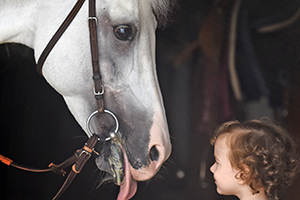 Horse Language
Horse Language
Rebecca Endicott
Horses cannot speak like human beings. However, they are wonderful at communication. They can say “I am angry”, “I am hungry” or even “I love you very much” by using their body language and voices specific to them to expose their thoughts. Only you have to try to understand this language specific to horses. Everybody can learn “horse language” with the help of some education.
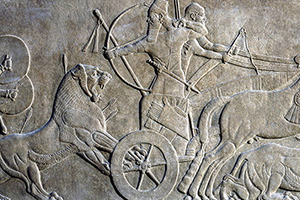 The Beginning of the Companionship between Horses and Men
The Beginning of the Companionship between Horses and Men
Mesut Gök
Writing the history of the horse in ancient times, appears to be similar to writing a short history of human civilization. It is a glance over the earliest steppe communities, the earliest migrations of these communities, the great wars of the early ages and great victories. The horse, which was domesticated in the northern Black Sea or Central Asian steppes, was known by the Near Eastern civilizations after the invasions in the beginning of the second millennium BC and changed the course of civilizations.
Bit and Stirrup
Faruk Sümer
Bit is the instrument that enables the rider to command a horse. It is not possible to ride the horse as you desire without a bit. In the past, people used temporary bits made of ropes with no saddles or other equipments, to travel short distances with their calm, mature geldings to places like fields, vineyards and gardens. A stirrup, which is also thought to be an invention of Turks, is also an important part of the saddle helps to mount and master the horse.
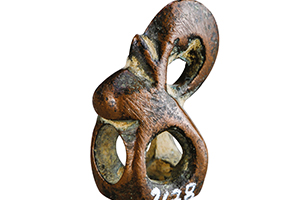 Harness Sets
Harness Sets
Halûk Perk
Harness sets are needed for the utilization of horses in transportation and freightage. The harness is the belt set that enables the horse to be tied to carriages and instruments like plows. The harness maker is the person who makes the pieces of harness. The photos that are used in the article to introduce the harness sets are taken from the private collection of Haluk Perk and collection of the museum. Not all of the examples in the collection were mentioned in the article.
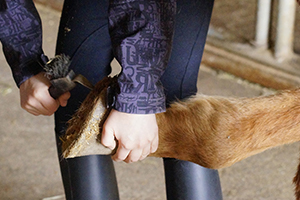 Barefoot Horsing
Barefoot Horsing
The natural hoof approach was founded 30 years ago by two horseshoers. Jaime Jackson and Gene Ovnicek made an independent field study on wild horses in the middle of 1980s. The results they got were enough to justify the abolishment of the traditional recognition of the activity of fitting a horse with a shoe. Nowadays, the defenders of the natural hoof current are growing in number worldwide.
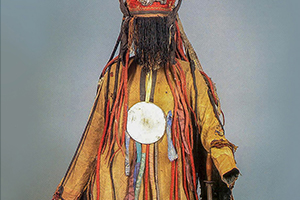 Horses in the Cosmogony of Shamans
Horses in the Cosmogony of Shamans
Bilge Seyidoğlu
According to Turkish mythology horses take the shamans to the places of holy powers. Horses that have their place near Gods are the symbols of death and intuition, and have their places both on earth and in heaven. Its presence is needed for the Gods to help human beings. A horse is the animal that represents a mysterious world on earth. It is the best friend of shamans and human beings. Horses also know the road that will take the humans to heaven.
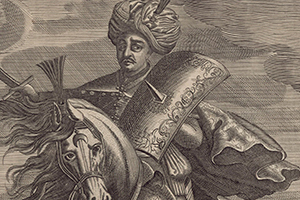 Horse in Turkish Symbolism
Horse in Turkish Symbolism
Özlem Oktay Çerezci
The active presence of horses in the Turkish life style is a well known fact. As Chinese say it while Turks had their meals and slept on horseback, horses had a special place in their thoughts and beliefs. Horses protected their mythological and symbolic meanings for centuries in the wide geography where Turks expanded.
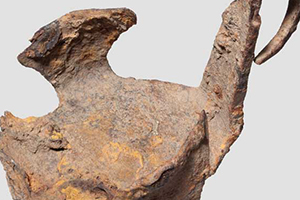 From the Nail of the Mule to the Horse Shoe
From the Nail of the Mule to the Horse Shoe
Burhan Oğuz
During most of the ancient times the nails of horses and mules were naked. Only after the time when Romans began to cobble the roads with stones the protection of their nails became a necessity. They produced a kind of sandal with metal footings for this. These footings were inclined to do the job of the horse shoes we use today and they were generally made of bronze or iron. .
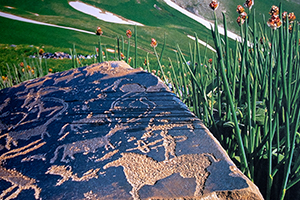 Horse Brands
Horse Brands
Tuncer Gülensoy
Turks have used some certain signs they named as “brands” on some certain parts of the bodies of domesticated animals like horses, cows, rams-sheep and goats to indicate the height and breeds. Pure bred horses are bred in studs belonging to either the state or persons in many parts of Anatolia and following an old Turkish tradition these horses were branded on their ridges with ancient brands inherited from ancestors. This valuable article should be read as the proceedings of years of field investigations on this subject.
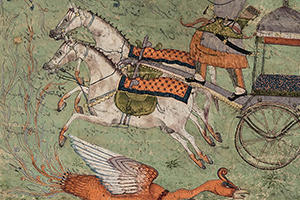 Myths about Horses
Myths about Horses
Emel Esin
The article by Emel Esin which is on the manifestation of the horse motif in Turkish culture and beliefs is one of the reference texts for most of the researchers working on the Turks. Esin is able to exhibit the cultural heritage of Turks who has an intimate relationship with the horses since the ancient times with the help of ancient archival documents and proofs. This cultural heritage includes works on almost every field including artefacts, portraits and paintings of many kinds, works of literature and religion.
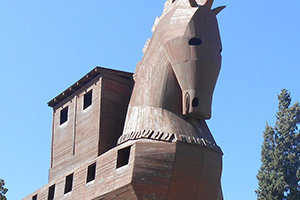 The Trojan Horse
The Trojan Horse
Gül Sarıdikmen
Trojan Horse can be considered as the biggest trick of war ever. Scenes from the legend of Trojan war like the “Judgement of Paris”, “the Abduction of Helen” and “the Trojan Horse” has been portrayed first in Greek vase paintings and then on wall paintings, on oil paintings on canvas, as sculptures and in manuscripts for hundreds of years with different techniques and styles.
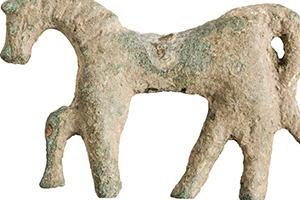 Thracians and their Horses
Thracians and their Horses
Halûk Perk
The Thracians who were one of the oldest people in the Eastern Europe were important representatives of Iron Age culture. According to Herodotus Thracians were the biggest warrior tribe in the world after the Hindus. “Heros” the common God of the Thracians was portraited mounting a horse. He was known as the “The Thracian Horseman”. In addition, the Heros cult gained wide currency in the Roman era.
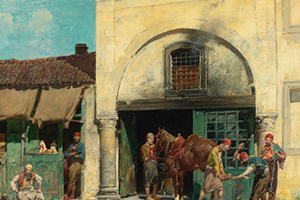 Ferhat Akbenli: “A Horseshoe Saves the Life of a Horse”
Ferhat Akbenli: “A Horseshoe Saves the Life of a Horse”
The place where there are horses is the workplace environment of horseshoers. Nowadays, horseshoers work in clubs and studs. The conditions are variable; we have to do what our jobs require no matter the weather conditions. In spite of the fact that there is a great interest in horse breeding in Turkey, there are not enough qualified horseshoers. It is a national issue to train staff that will represent this job in the future.
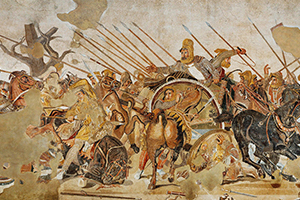 The Weights of the City of Alexandria Troas
The Weights of the City of Alexandria Troas
Halûk Perk
Alexandria Troas is an antique city in the west of Troas region, on the shores of the Aegean Sea just across the Tenedos Island. The city was given the name “Alexandria Troas” around 400 BC by Lysimakhos, king of Thrace in the honor of Alexander the Great. The “grazing horse” image we see in the coins and weights, which is also the symbol of the city, has been attributed to the Apollon Smintheion, the chief god of the Alexandre Troas. In this article, Haluk Perk tells us about the objects in his collection.
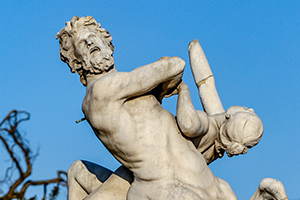 One Body, Two Souls, Two Natures: the Centaurs
One Body, Two Souls, Two Natures: the Centaurs
Tanju Toka
The myths about Centaurs in Greek mythology is mostly associated with the introduction of horses to Greece. As a matter of fact, Thessalia which is the place where most of the centaurs live is actually known as the place where horses are created by Poseidon. Centaurs are wild creatures who live up in the mountains, away from human beings, who ate raw meat, fond of wine and who were womanizers. However, there are also some centaurs living with human beings who were specialized in medicine.
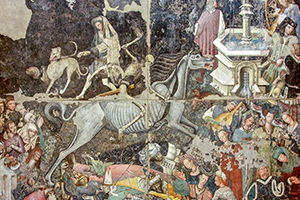 Horses Sense the Will of God
Horses Sense the Will of God
M. Salomon Haussdorf
When a horse you ride everyday starts to be bad tempered and act is if it has gone crazy and do not let its riders come nearby, this has always been interpreted as a bad sign. From ancient times onward such kind of events are regarded as signs for the future. Old Germans gave much importance to how a horse neighed and the bred special white horses in their sacred forests called Lucis. They thought that behaviors of these horses had some certain meanings.
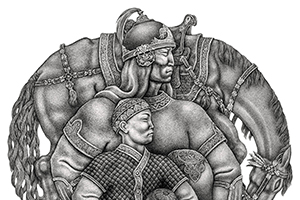 The Life of Turks with Horses in the PreIslamic Era
The Life of Turks with Horses in the PreIslamic Era
Ahmet Taşağıl
Following the domestication of horses the stirrup which was invented by Turks have become an important instrument. After the migration of the Avars to Europe this instrument was introduced there and from then on stirrup opened the way for very important historical developments. One of them is that it contributed to the birth of chivalry. Once again, instruments like bits, halters, bridles, reins that are used in order to manage horses became prominent in every aspect where Turkish culture expanded. Besides, they are still in use widely in the Turkic world.
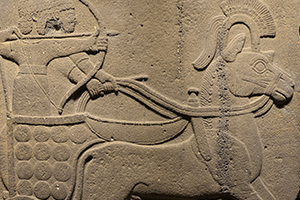 Horse in the Hittites: The Book of Groom Kikkuli
Horse in the Hittites: The Book of Groom Kikkuli
Güngör Karauğuz
Horses that were considered as the symbol of plentifulness, power and richness have also been one of the main themes in mythology. It seems that the Hittites have burrowed the word for horse from Sumerians since the equivalent for this word in Hittite language couldn’t be detected in Hittite texts on the clay tablets with cuneiform scripts. Horses were used as mounting animals, pulling wagons, sending messages to distant places, as mounts for cavalries in wars, in agriculture and for races on tracks.
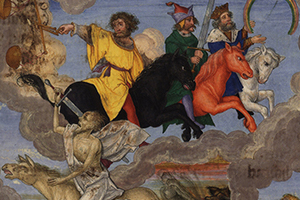 The Four Horsemen of the Apocalypse
The Four Horsemen of the Apocalypse
Teoman Ağar
The four horses of Apocalypse is mentioned in a scroll which is sealed with seven seals as told in the Gospel of John. This scroll tells the story of mankind which the God holds in his hand. There is no one on the earth nor in the sky nor underground to open the scroll. Only the Lion of Judah who is a descendant of King David is authorized to open this scroll. The interpretations on the Four Horsemen of the Apocalypse generally agree that the text is about the history of mankind.
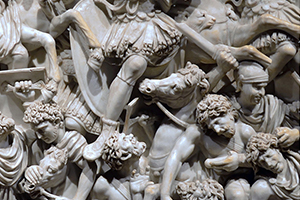 The Cavalry versus the Infantry: How did the Barbarians Beat the Romans
The Cavalry versus the Infantry: How did the Barbarians Beat the Romans
Sabit Duman
The big defeat of Rome in the Cannae War in 215 BC exposed the importance of cavalry troops in the side of the Empire. Horses had a great role in the glory of Hannibal. In spite of the fact that the Roman generals realized the combating power of cavalries with their bitter experiences in fact the structure of the Roman army stayed the same. The infantry forces always were in the forefront.
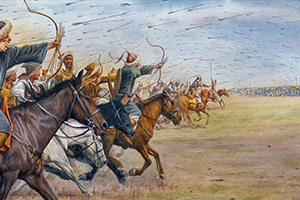 Turks, War and the Horse
Turks, War and the Horse
Erkan Göksu
Turks come forth among other pioneer nations regarding the military culture and art of war in the world history. Foreign resources mention with praise the mastery of Turks in the art of war, on tactics and strategies in the battle, the weapons they own, and their ability to use these weapons. The only way for the Old Turks to protect the wide borders of the country was to have a strong military training, education and to have superior weapons. That is why they raised their children with military education from their early ages.
 Turks, War and the Horse
Turks, War and the Horse
Altan Armutak
The domestication of horses is the most tragic breaking point in the history of these animals. Horses which were obligated to spend their lives pulling the weights of humanity have paid heavy prices when they were left in the middle of hostility in wars. The introduction of motor vehicles into military use was the second breaking point in the history of horses. Tanks and armored vehicles which were faster and more powerful took the places of horses in the World War II; hence only a limited number of horses were used. In the middle of the 20 th century the usage of horses in wars totally became history.
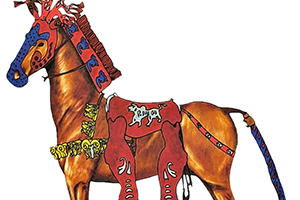 The Place of Horses in the Death Cult and Symbolism in Old Turkic People
The Place of Horses in the Death Cult and Symbolism in Old Turkic People
Yaşar Çoruhlu
This article is focused on the Turkic periods before the 10-11th centuries when İslam had reached Central Asia via Persia and some of the Turks had converted to Islam. In addition to this, the place of horses in the death cult of old Turkic People and symbolism and how old traces about horses is reflected on Turkish communities and states in later periods is elaborated. The foundation of the article is the artifacts obtained from cairns.
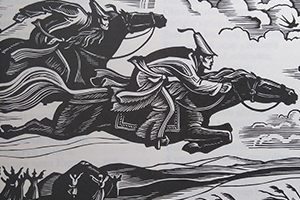 Description of a Horse Race in the Epic of Manas
Description of a Horse Race in the Epic of Manas
Emine Gürsoy Naskali
The horse race that is described in the Epic of Manas is probably one of the the most dramatic scenes in the world literature. After the hero of the legend Manas was murdered by his rival Konurbai, his wife Kanykei took refuge with her father with her son Semetei. Kanykei wants her horse Taitoru to enter the race in the big feast, because if she wins the race her son will be fortunate and will take the revenge of his father.
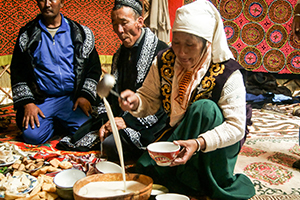 Koumiss
Koumiss
Şirzat Doğru
Koumiss is a national beverage of Turkic tribes in Central Asia. Koumiss is white colored, more fluid than milk. It has a more homogenous structure and doesn’t contain clots. It has a specific taste and smell of its own. It does not have unfamiliar odor other than the smell of milk. When one drinks koumiss for the first time they feel somewhat an astringent taste. It leaves a delicious taste in the mouth. Following researches done in many countries particularly in Turkic republics and Russia it has been revealed that koumiss has many benefits for our health.
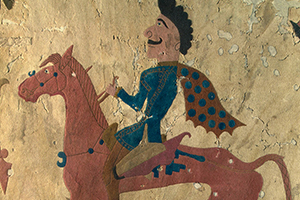 Horses in the Pazırık Cairn
Horses in the Pazırık Cairn
Semra Kır Şimşek
The archeological artefacts found in the Pazırık cairn gives us detailed information on Scythians who were the representatives of a high intellect of the steppe culture with the horses. The Scythians were traders and in addition collectors of works of art from all of the Asian geography. The golden jewelry with embroidery, wooden knick-knacks and furniture, leather-wooden furniture, carpets made of felt, silk and wool found in the Scythian cairns were unique works of art. Horses which the Turks believed that would stand by their side whether on earth or in heaven and harnesses came first in these findings.
 Horse Shaped Grave Stones in East Anatolia
Horse Shaped Grave Stones in East Anatolia
Recep Yaşa
Horses are symbols of bravery and superiority for Turks. On the other side, being without a horse means weakness and defeat. Therefore, the tradition of Turkic tribes that settled down in East Anatolia of making horse shaped grave stones following their ancestors even after their conversion to Islam should be evaluated in this respect. As a matter of fact you can still encounter this tradition in some parts of Anatolia even today.
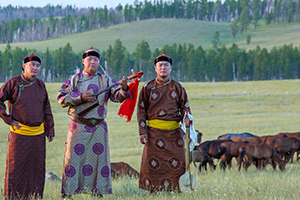 Horses in Tuvan Throat Singing
Horses in Tuvan Throat Singing
The Tuvan music which is famous for the one-to-one imitation of the sounds of nature and animals is the art of depicting the elements of nature by making rising, descending, trebling or deep voices that come out of the throat. It is thought that this style of music derived from among shepherds wandering in the steppes. Naturally horses were one of the most important sources of inspiration for artists performing this music.
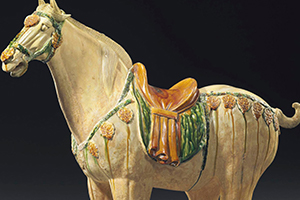 Horses, the Army, the Aristocracy and Trade in China
Horses, the Army, the Aristocracy and Trade in China
Merve Yiğit
Being used as a combat vehicle is actually the latest mission that horses took in China. Horses were used to draw two wheeled horse carts or in hunting in the Shang dynasty. As horsed archers emerging from the northern and southern parts of China became a threat for the country the importance of utilization of horses as combat vehicles became evident.
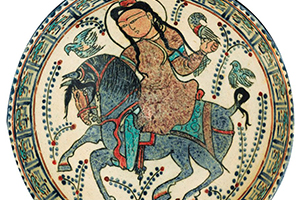 Training of Horses in the Seljuks
Training of Horses in the Seljuks
Muharrem Kesik
The horse was the most important instrument for the Seljuk cavalries in order to survive during combats and to runaway after a defeat without being held captive by their rivals. The cavalry captured their enemy, followed, ran after and chased them with the help of their horses. Owing to their horses they could successfully use the hit and run method which was their favorite combat method.
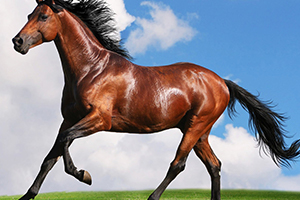 Arabian Horse
Arabian Horse
Arabian pure bred horses have well shaped small heads; one of a kind raised and arched neck structures that has, manes with thin, soft and wavy hair. The abdomen of an Arabian horse is flat, its waist is short; its ridges are curved and harmonious. It is a pretty agile animal. Its legs with strong bones, powerful joints and steely tendons give the Arabian horse a unique ability to move. Time out of mind Arabian horses are preferred as troopers mostly owing to the fact that it is a clever and faithful animal.
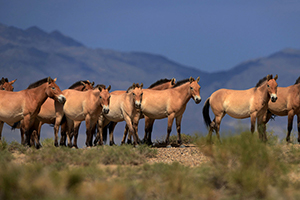 The Coming Back of the Mongolian Horses: Takhis
The Coming Back of the Mongolian Horses: Takhis
Lydia Pyne
For over 160,000 years, wild horses have roamed freely in the steppes of Central Asia. Less than a century after they were encountered by Russian and European explorers, the horses, called as takhi in Mongolian, were nearly extinct. In 1969, three years after the last reported sighting of a live takhi, the International Union for Conservation of Nature declared the species extinct in the wild.
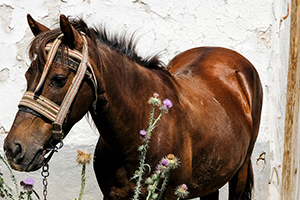 Breeds of Horses in Anatolia
Breeds of Horses in Anatolia
Kudret Emiroğlu-Ahmet Yüksel
Throughout history Anatolia has been a place of transition where lots of people migrated in and out. That is why you can find some certain common characteristics in horses but it is impossible to find horse breeds peculiar tp Anatolia that carry common morphological specialties Mostly, it is also impossible to talk about distinct and sorted out breeds. That means that horse breeds have eventually have mixed with each other and don’t show certain morphological characters. Generally, it is possible to sort out the horses in Turkey into groups that show transitional forms.
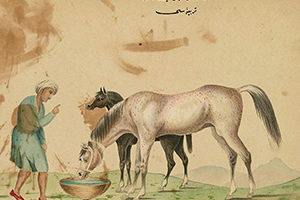 Furusiyyas
Furusiyyas
Mesut Şen
Furusiyya is the name of the genre of texts in the Islamic world dating from 7th to 19th centuries, written on the subjects of horse breeding, equestrianism and training of horses. The word “furus” is the plural of “feres” which is the Arabic word for horse. All of these kinds of works are based texts and their Arabic translations dating from the time of Abbasids. Muhammed b. Ya’kûb b. İshak b. Ahi Hizâm is the most important writer who wrote about horse breeding.
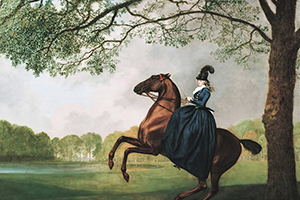 English Thoroughbred
English Thoroughbred
Bonnie L. Hendricks
Traditionally it is believed that English Thoroughbreds originated from three foundation sires imported to the country, that are Darley Arabian, Byerly Turk and Godolphin Barb. The process of the development of this wonderful horse actually began in earlier years. During a 665-year-process lots of Iberian, Moor and Turkman (usually named as Turk) horses were imported from Spain, Italy, Africa and Turkey.
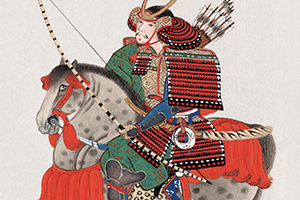 A Japanese Tradition: Appreciation of Gunbas
A Japanese Tradition: Appreciation of Gunbas
F. Betül Aydın
There is a belief in Japan that holds a strong place in public memory about horses: horses are creatures that came from the sea and out of deep parts of the earth. It is believed that this legendary creature spread to other parts of the world from Japan. In Japanese beliefs the horse serves as a messenger between gods and human beings. Horses are used in rain prayers and in various other ceremonies
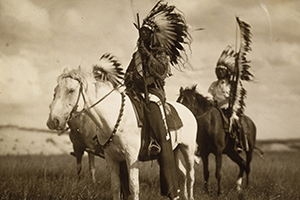 Mustangs: The Horses of Indians
Mustangs: The Horses of Indians
Selvanur Şölen
The word“mustang” has derived from the word “mesfeno” in Spanish which means “stray”. This word is used for wild horses in North America. Mustangs were wandering freely in the nature and they being reproduced with natural selection. They were domesticated, used as mount animals by the Indians. Later on the were identified with Indians.
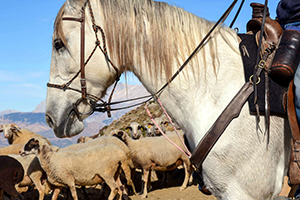 A Book on Turkish Horses
A Book on Turkish Horses
Lütfi Bergen
Ertuğrul Güleç’s book Turkish Horse Breeds (Türk At Irkları) is a valuable source on the “Turkish Horse” which is extinct today.
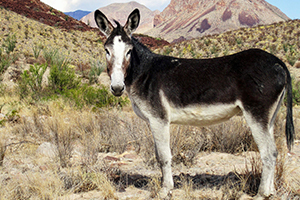 The Donkeys and Mules of Anatolia
The Donkeys and Mules of Anatolia
Ahmet Yüksel
In spite of the fact that donkeys originated from Africa, they have been the best friends of Anatolian peasants since they are cheap in price and to more affordable to keep. Ahmet Yüksel tells the story of these beautiful animals that do a lot of work with the least cost. You can also find the story of the mules that share the same destiny with donkeys and who are at least as rugged as they are. Though their service spaces have narrowed a lot and they have diminished in number the two closest friends of men still does a lot of work in many parts of Anatolia.
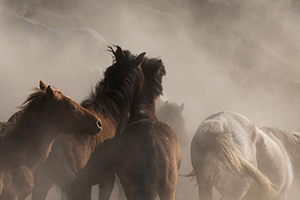 Jades
Jades
Lütfi Bergen
The jades are horses that are abandoned in nature when the winter is coming. When the horses who were fed, groomed, provided with new horseshoes for almost 10 to 15 years are abandoned they have to struggle with hunger, thirst, finding a shelter and protect themselves from the wolves in the coldest times of winter. The survivors may be put into work again in the spring by their owners. Most of them continue their lives in the herds of jades in the wild.
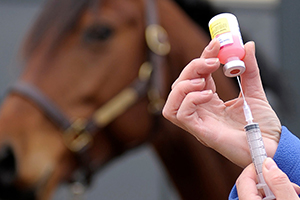 Common Horse Diseases
Common Horse Diseases
H orses are classified as big animals according to their heights and weights. Nevertheless, they can do activities like jumping and running very easily and fast. One can think that they are extraordinary animals regarding their abilities. However, infectious diseases may do a lot of harm to the horses. In addition to these diseases they are always subject to joint disorders and mental disturbances because of being neglected or being bred in bad conditions.
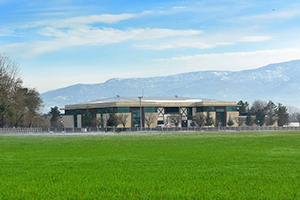 Equine Hospitals
Equine Hospitals
I mportant steps are taken for the improvement of Turkish horse breeding. Equine hospitals take the lead in these developments. 11 equine hospitals came into service all at the same time in the year of 2015. Each of these equine hospitals has the technical equipment to apply in all kinds of clinical applications for the horses and work in coordination with the veterinary departments of universities.
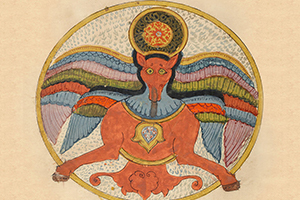 Baytarnames
Baytarnames
Muhittin Eliaçık
Baytarnames (Epistles of Veterinaries) is the general name given to works on the diseases of animals and their treatments; but rather maintenance of horses and horse diseases is the subject of most of the works. When we look at the contents of these works we see that mostly maintenance of horses and horse diseases are discussed and in addition diseases of sheep, camels, cattle and other animals are also mentioned in a few pages. The Baytarname of Tayyarzade Ata is a good example for this genre in the Ottoman period.
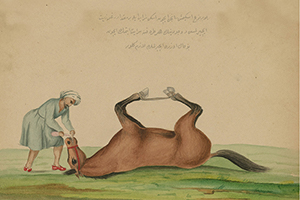 History of the Profession of Veterinary MedicineI
History of the Profession of Veterinary MedicineI
Reha Gültepe
İn Ancient Greek civilization the word “hippiatroi” meaning “horse doctor” was used for persons who were taking care of the treatment of horses. Then later the title “hipiater” was used in the Byzantine Empire. The Veterinary Medicine had developed significantly regarding the health of horses in Ancient Greek especially in the Aegean province. Ancient Greek philosopher Aristotle who lived in the 4th century AC was a veterinarian as well. In his work named as Historia Animalum he talked about animal health.
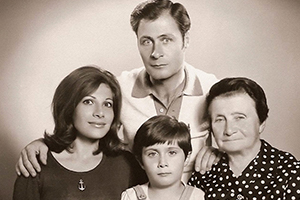 In the Memory of Akın Finci
In the Memory of Akın Finci
Reha Gültepe
Professor Finci who completed some of his studies in the USA was a very talented horse surgeon. An important number of seriously wounded race horses was able to return to racing and won races owing to him. That is why he is a well respected figure in Turkish horse racing. Each year Turkish Jockey Club organizes a race in the memory of Finci who has passed away in 2005.
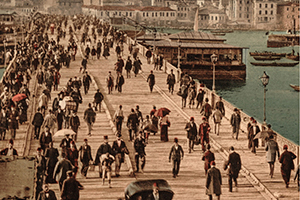 From the Prohibition of Riding to Horsecars
From the Prohibition of Riding to Horsecars
Alican Küçükcan
Prior to Tanzimat reform period other than the sultan, no other officer apart from three officers on top of the ulema class, the shaykh al-islam, kadi-ul askers of Rumelia and Anatolia could ride a horse. Viziers, other dignitaries, notable persons and landed proprietors could get on saddles if they were given special privileges. The prohibition of riding was violated only in weddings. Brides could ride horses. Women could be seen riding horses in the streets of İstanbul wearing silk and velvet gowns in weddings.
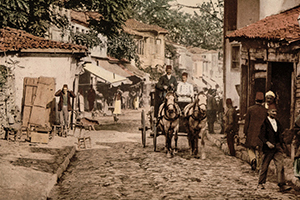 Laws on Draught Animals in the
Laws on Draught Animals in the
Hüseyin Nejdet Ertuğ
As Turks have a social life mingled with horses we encounter various regulations in book of laws on animal law and in archival resources. Great attention is given to behaving kindly, feeding on a regular basis, having health checks, restraining of overloading of the draught animals that they need in most part of their daily lives. The rules have been explained in great details.
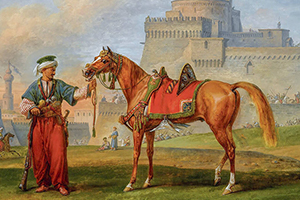 Waystation Horses
Waystation Horses
Cemal Çetin
In the Ottoman period, the way station organization has a great significance in the provisioning of horses for official transportation and communication. The horses in the way station were the main instruments in the transportation staff working in the way station should find horses that are fast, suitable for riding and enduring. That is why the state took all the necessary cautions on the regular operation of the way station.
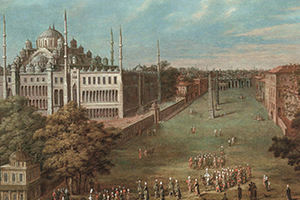 Horses Walking from Bursa to Üsküdar
Horses Walking from Bursa to Üsküdar
Sinan Yılmaz
Turks made their journeys in the history riding on their horses. Likewise, they came to Anatolia on horses. The last words of Sultan Murad I, who is one of the most important leaders in this journey, before he died on the battlefield in Kosovo were “Do not dismount from your horses”. Sinan Yılmaz takes the readers on a joyous journey from Bursa to Üsküdar, a journey between two most important stations in the history of the Turks.
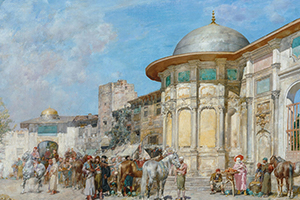 Lost and Stolen Horses in 16th and 17th centuries in Ottomans
Lost and Stolen Horses in 16th and 17th centuries in Ottomans
Emine Dingeç
Until the 19th century the horse was a very fast riding and draught animal. On the other side, horses were essentially best friends of humans in daily life. Because of its features the material value of horse was very high and this made horses valuable as a stolen good. Hence, horse thievery was common until the 19th century. The state provided service to stop thievery and protect the lost property of people by means of officers names as yavacı whose duty was to protect lost and found property.
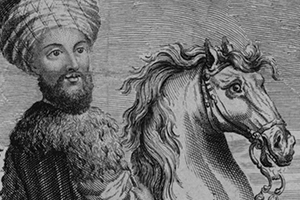 An Ottoman on Horseback in Paris: Yirmisekiz Mehmed Çelebi
An Ottoman on Horseback in Paris: Yirmisekiz Mehmed Çelebi
İlhami Danış
The first permanent Ottoman ambassador was delegated in the reign of the Sultan Selim III. However, we can say that before his delegation there were many ambassador who were sent for short periods of time. The most famous one among these officers was Yirmisekiz Mehmet Çelebi Efendi who was sent to France. Mehmet Çelebi stepped on French soil after a long, difficult navigation and then he was presented some excellent horses and carriages. palaces.
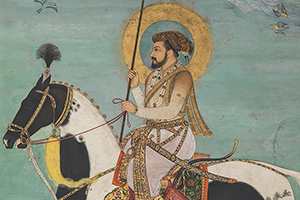 The Valiant Spares A Horse for the other
The Valiant Spares A Horse for the other
Şükrü Elçin
The horse held a place in literature, in arts and in the making of customs and tradition other than its material and military power. It has conquered the hearts of Turks with its beauty, harmony, power, speed, endurance and humane features. The influences of horse can seen in funeral rites, festivals, circumcision ceremonies, weddings, traditional law, names of places and persons, sports, shows, plastic arts and legends.
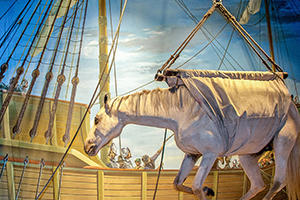 Equine Ships
Equine Ships
Seyfullah Aslan
Equine ships were special kind of ships built for the transportation of horses across the sea and rivers. Equine ships were used by the Ottomans for centuries especially in naval expeditions. Trade goods other than horses were also carried by equine ships between the coast of Üsküdar which was the hub of expeditions to the East and the coast of Eminönü. Moreover, the transportation of timber and wood which were an important supply of provision of the capital city was also made using these vehicles.
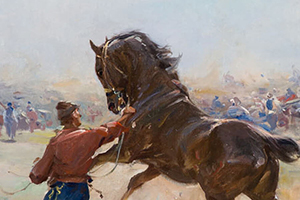 FRANCIS MARION-CRAWFORD
FRANCIS MARION-CRAWFORD
A Traveler in a Horse Market
In the old Ottoman İstanbul there were two big horse markets; one in the vicinities of Üsküdar and the other one in Fatih. Various kinds of horses and equine accessories in the market did not only take the attention of the buyers wandering in the market but they also enchanted the foreign travelers as well. Francis Marion-Crawford was one of these travelers who visited İstanbul in the 1890s. He described instantiations he witnessed in the horse market vividly in great details in his travel book.
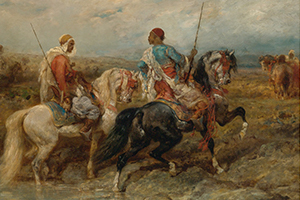 The place of Horses in Politics in South Arabia
The place of Horses in Politics in South Arabia
Daniel Mahoney
Horses played an important role in the social life, economy and politics in the Resuli dynasty in South Arabia. This article examines how the sultans used horses in political intrigues. In this sense, the meanings of events like gifting the horses to both foreign or local parties, the sultan’s confiscating the horses of tribes in South Arabia and the relocation of horses are explained in the light of the Resuli documents.
Horses and Sets of Horse Equipment Gifted to the Sultan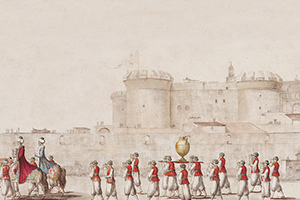
A. Çağrı Başkurt
Whether it is a nomadic state nor a settled one the importance of horses in the Turkish state protocol cannot be denied. One comes across various records that show the horses and sets of horse equipment gifted to the sultans for various occasions. The increase in number of these gifts on especially religious holidays, weddings and nawruz celebrations strikes the eye.
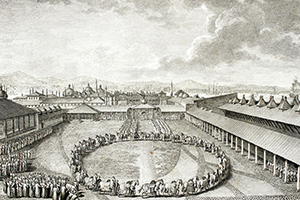 Imperial Stables in the Topkapı Palace
Imperial Stables in the Topkapı Palace
Zehra Dumlupınar
In the Ottoman Empire the place where the horses belonging to the Sultan and masters of the inner palace (Enderun ağaları) are kept is called as the “ıstabl-ı âmire”. The officer who was in charge of the ıstabl-ı âmire was at the same time a master of the outer palace, the mîrâhur (mîr-i âhur). In fact, the word“ıstabl” comes from the Greek word “stablion” meaning stable. There were sultan’s stables in both of the first two capıtals of Ottoman Empire Bursa and Edirne palaces.
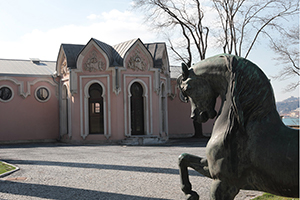 The Stable Pavillion in the Beylerbeyi Palace
The Stable Pavillion in the Beylerbeyi Palace
Built overlooking the Bosphorus from the forth set of the Beylerbeyi Palace, the Stable Pavillion, which is one of the most elegant examples of the Turkish horse culture was completed in 1865. It was built during the reign of Abdulaziz, the only Ottoman sultan which has a statue on horseback and the architect of the pavillion is Sarkis Balyan. The latest restoration of the pavillion began in 2011 and it was completed in 2019.
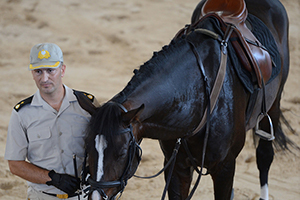 The Presidential Escort of Honor on Horses
The Presidential Escort of Honor on Horses
Murat Öztabak
The Presidential Guard Regiment that attend national ceremonies and welcoming ceremonies of guest presidents serves for the development of equestrianism which is the ancestral sport of Turks and represent Turkey in the international racing organizations as a national team.
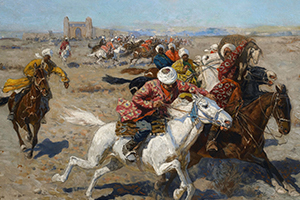 The Cündis
The Cündis
In the Ottoman empire talented cavalrymen were named as “cündi”. The cündis was talented enough to make various moves riding on their horses. They could shoot arrows and hit the target, they could change reins and saddles of the horses while they were on horseback and they could even change horses when they were riding galloping horses. They were masters of swordcraft; they could hit the targets with arrows, throw spears and use maces all on horseback.
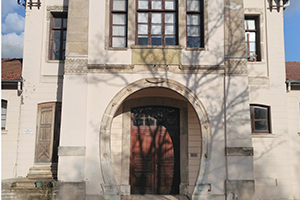 The Imperial Stables of the Yıldız Palace and Ferhan
The Imperial Stables of the Yıldız Palace and Ferhan
Olgay Söyler
Ferhan was an Arab horse and belonged to the leader of a clan in Baghdad. When Ferhan saved its owner in a battle he became famous. Sultan Aldülhamid ordered that the horse should be bought for him. The owner of the horse sent the purebred Arab horse to the Sultan as a gift after learning about the Sultan’s request. Before Ferhan arrived in İstanbul a barn specially designed for it with an entrance door in the shape of a horseshoe was built in the Yıldız Palace.
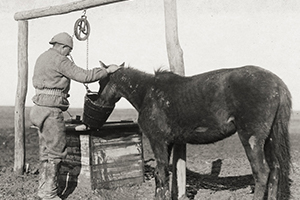 A Graduation Ceremony in Konya Horseshoer School Gazi Mustafa Kemal attended.
A Graduation Ceremony in Konya Horseshoer School Gazi Mustafa Kemal attended.
Kamil Yüce Oral
In 1922, the most critical year of the War of Independence, Commander-inChief Mustafa Kemal Pasha arrived in Konya after inspecting the battlefront. The preparations for the Battle of Dumlupınar was proceeding intensely. The Horshoer School in Konya which was opened in 1921 following the other school in Eskişehir was about to produce its very first graduates.
Horse Javelin (Jereed) and Riding Pacer Horses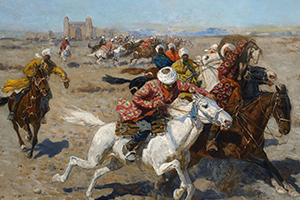
İbrahim Yıldıran
Horse Javelin (Jereed) is one of the rare examples of equestrian sports in the world dating back from ancient times and that has been preserved in its authentic form until modern times. Various theories have been suggested regarding to its origin. However, since you can encounter horse javelin only in geographies dominated or inhabited by Turks and the games cease to exist in places where Turks have left you can say that the game is indigenous to Turks. The game is played riding galloping horses and based on throwing javelins to hit the rival riders and then protecting oneself from the javelins they throw at you.
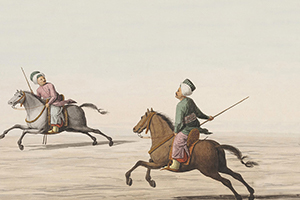 Stick
Stick
Stick (değnek or cop) game is a kind of festive game played with jereed horses. It is also mentioned as “corn wood” or “stick picking” game in some sources. This game was played in old Anatolia generally in weddings accompanied by shawm-and-drum. Nowadays, it is kept alive only in Balıkesi and some parts of the Aegean region.
 Horse Whisperers
Horse Whisperers
Amelia Soth
In East British folklore people who perform these kind of rituals are called as toadmen. These people were some kind of witches who had mysterious and strong connections with horses. A toadmen could calm down an angry horse or could brutalize a horse which nobody could ever calm down. It was a very tempting dream for a farmer living in the 19th to be a horse magician.
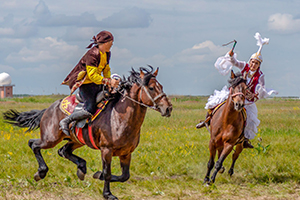 Equestrian Games around the World
Equestrian Games around the World
M. Tekin Koçkar
Central Asia, which is the cultural motherland of equestrian games, is home for various examples of these games. When you examine the equestrian games literature you will see that similar games have been adopted successfully in accordance to their own culture in different geographical places. There are old equestrian games inspired from cavalries and training for combats like chovgan, polo, buzkashi, kok boru, jereed, pasola. There are modern equestrian games based on ancient training techniques as well.
 A Festival on Fire: Las Luminarias
A Festival on Fire: Las Luminarias
Every year on January Pinares, a village in San Bartolo situated 100 kilometers away from Madrid, hosts one of the most enthusiastic festivals in the world: Las Luminarias Festival. The festival is organized in the memory of St Anthony who is believed to be the protector saint of animals. Spanish people believe that jumping over the bonfire riding on their horses in this festival brings them luck and protects them from diseases.
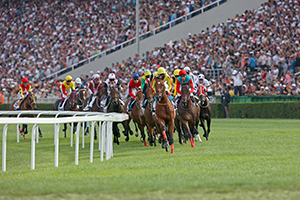 Hippodromes in Turkey
Hippodromes in Turkey
The role of the hippodromes with newly re-inforced infrastructures in the Turkish horse breeding is inevitable. There are 9 hippodromes in our country and night races can be run in most of them. In each hippodrome, there is an equestrain hospital that is equipped with the latest technologies There are also hippotherapy centers that give their services for free. Hippodromes are not only the places for watching the races but also places that serve the local people. There are lots of green spaces, walking tracks and parks for picnics in each of them.
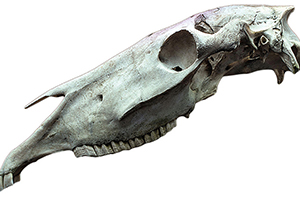 The Horse Skulls Hidden Under Ground Floors of Houses
The Horse Skulls Hidden Under Ground Floors of Houses
Allison Meier
Old houses in Ireland often have horse skulls buried under the floors. Folklorists and archaeologists disagree on exactly why such a tradition is practiced. When restoring or renovating an old house in Ireland, it’s not unusual to find a horse skull under the floor. While the rather macabre discovery might suggest some ritual sacrifice, it likely has a more practical origin: acoustics.
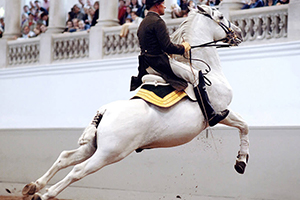 The Ballet of White Horses: Spanish Riding School
The Ballet of White Horses: Spanish Riding School
Ali Çiçek
The Spanish Riding School in Vienna is the world’s oldest and only royal riding school that continues to be in service in the world. The shows performed by Lipizza horses is being followed by more than 300 thousand visitors each year. It is not possible to find tickets for the shows of this school most of the times because of the high demand. Besides, you can watch the morning trainings of the horses with tickets.
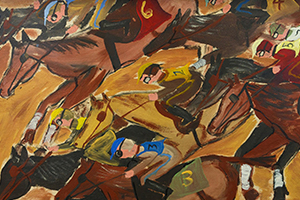 A Short History of Horse Races
A Short History of Horse Races
Reşat Köstem
Organized races are made between pure bred horses which are registered in studbooks that are accepted globally and under internationally accepted rules according to the type of races. England is the cradle of the organized races and the history of races began with the races made in the 18th century. As for the Ottoman period the first organized races were in 1856 started within the body of Smyrna Races Club which was established by the Levantines.
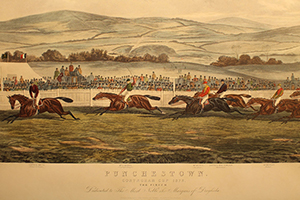 Horse Racing and Pari Mutual Betting
Horse Racing and Pari Mutual Betting
Reşat Köstem
Nowadays, the subject of horse races can not be considered apart from pari mutual betting. Betting is not peculiar to the horse races only. People bet a lot in almost all kind of sports but especially for football games. Since these kinds of bettings are organized officially they are an important sources for the compensation for the provisioning of many public services. In the Ottoman Empire, Pari Mutual Betting was available for public for the first time on April 3th 1895 in the horse races in the Smyrna Races Club.
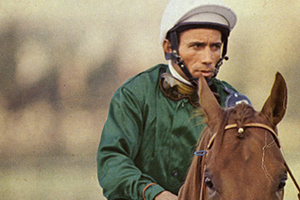 Süleyman Akdı: “The Horse is my Patron”
Süleyman Akdı: “The Horse is my Patron”
A good jockey knows how to win a race that is not even possible to win. His skills can be seen in how he takes position in the race, how he stays energetic on the horse on the last part of the platform and how he doesn’t tire out. Some horses are picky about their riders. Horses has a language of their own. The jockey understands this language. The jockey must understand his own body language as well. Things like his sleeping pattern, quality of his nutrition and other things effects his success in his profession.
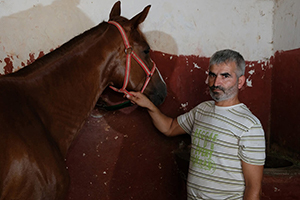 Hasan Aslanparçası: “The Race Horse is a real Sportsman”
Hasan Aslanparçası: “The Race Horse is a real Sportsman”
A race horse is a real athlete. All of the process before the race is under the supervision of the groom. The horses are groomed before the races. Six hours before the races horses are given race 1,5 kilos of food, which is less than their normal meals. British thoroughbreds are fed with oat and Arab horses get machine grinded oat. Later after the races the horse is taken to a walk for their breathings to get to normal and then their feet are washed to cool them.
 The Education for Horse Breeding and Training
The Education for Horse Breeding and Training
Horse racing industry takes the biggest place in horse breeding as it is in other parts of the world. This brings up the issue that since breeding and training of horses is a priority qualified staff for this job is much in demand so the laws and regulations for horse breeding, training and other stuff is reorganized. According to the new regulations Two-Year Degree Program for Horse Breeding and Training is added to higher education.
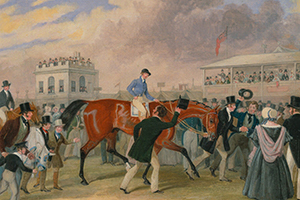 The Industry of Horse Racing and Organized Sales
The Industry of Horse Racing and Organized Sales
Ömerhalim Aydın
Nowadays, when we look at the countries in which horse races are industrialized we see that organized sales are one of the most important elements and even the most important element. The heart of the industry in which race horse breeding is made beats up in these sales. Sales rings are places where the hopes of breeders who want to market their products meet the horse owners who are looking for adding new stars to their stable companions.
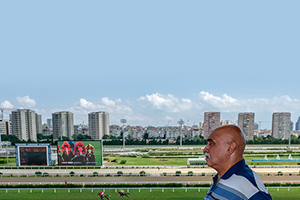 Ahmet Giz: “Love of the Horses is so much more above the Labor they Require”
Ahmet Giz: “Love of the Horses is so much more above the Labor they Require”
A horse trainer is the person who takes care of the maintenance of a horse, who organizes the nutrition and training programs and prepares the horse for races. Ahmet Giz is a person who has spent his half century life with race horses in the Veliefendi Hippodrome. We talked with him about how he trained race horses and how he prepared them for the races. This interview throws a light upon the horse racing industry in Turkey.
Atilla Akbıyık: “Everybody should Ride a Horse at least for once in a Lifetime”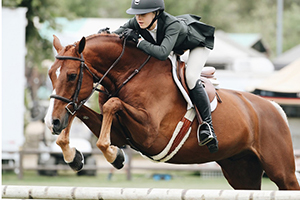
Show jumping is one of the hardest kinds of sports that needs that the rider and the horse to be coalesced. In spite of the fact that the horses seem to be perfect creatures, they have their own weaknesses, too. They can fall into disadvantaged positions because of their biological structures. For example since horses has a weak conception of depth they are not good at distance judging. A good rider who is well aware of these facts can skillfully manage the horse in hard race tracks.
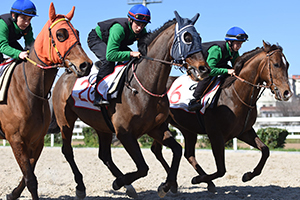 Ekrem Kurt Apranti Training Center
Ekrem Kurt Apranti Training Center
Show jumping is one of the hardest kinds of sports that needs that the rider and the horse to be coalesced. In spite of the fact that the horses seem to be perfect creatures, they have their own weaknesses, too. They can fall into disadvantaged positions because of their biological structures. For example since horses has a weak conception of depth they are not good at distance judging. A good rider who is well aware of these facts can skillfully manage the horse in hard race tracks.
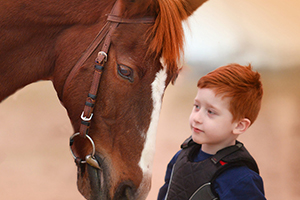 Hippotherapy
Hippotherapy
Yavuz Kütük
The history of hippotherapy begins in the 1960s in Europe, US and Canada with the establishment of therapeutic riding centers. Initially hippotherapy came up owing to the works of balance on horses in Germany. Later on, horse riding was introduced as a contribution to physiotherapy in Germany, Austria and Switzerland. As for the 1970s physiotherapist from the US have made improvements in the utilization of horses for therapeutic purposes for the movement of horses. Later on in this process all these developments were grouped under the name of hippotherapy.
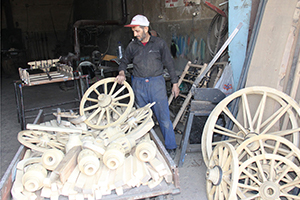 Musa Ünal: “Horse Carriage is a Decoration Now”
Musa Ünal: “Horse Carriage is a Decoration Now”
Carriage building ranks first in the historical professions becoming extinct. People who have set their heart on this profession are tin in the ground. Musa Ünal who is one of the last representatives of this profession lives in Konya. Harness making was one of the most prestigious professions in the past. However, this profession is heading for the last roundup, too.
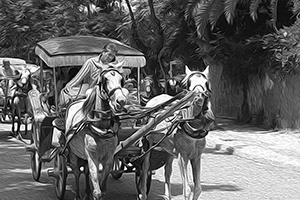 Let’s Take the Pha eton down the Road Today
Let’s Take the Pha eton down the Road Today
Akın Kurtoğlu
It has been a long time since street-cars left the streets of İstanbul. The phaetons also operate only in the Prince’s Islands. Yet, it is not possible to erase the memories of the past that we shared with horses. The writer of this article tells us the story of journeys in the Istanbul of his childhood; when the streets were full of clip clops, the smell of horse manor and scrapes of phaetons.
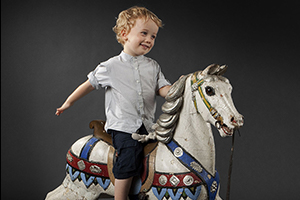 Horse Toys
Horse Toys
Archeological artifacts show us that the first examples of toys were made by the Egyptians. It is impressive to learn that Egyptian kids were playing with horse headed sticks and wooden horses 2500 years ago. Horse shaped objects and toys are still pretty attractive for children nowadays. With no doubt, carousels in amusement parks are the first of horse shaped toys that comes into the mind.
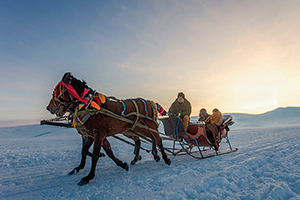 Horse Tourism on the Lake Çıldır
Horse Tourism on the Lake Çıldır
With the coming of freezing winter days some activities around the Lake Çıldır attracts one’s attention. An authentic feast with the lead of horses is about to begin.
Cappadocia: The Land of Beautiful Horses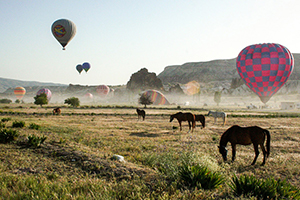
Nowadays, horses and horse farms that increased in number have been one of the reasons of the economic and cultural liveliness in the region. The use of horses as an alternative tourism activity is becoming widespread in Nevşehir. Guided horse riding tours for a-day-long or multiple days with overnight stays are organized in the valleys where motor vehicles cannot enter.
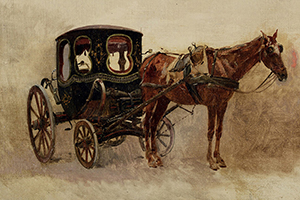 Phaetons of İstanbul Throughout History
Phaetons of İstanbul Throughout History
Mustafa Noyan
The uncovered phaetons were named as “landau” and covered ones were called as “broughman”. The word phaeton on the other side generally implied uncovered bendy carriages. Phaetons were carriages with four wheels run by two horses; the front wheels were smaller and the back wheels were bigger. The phaetons played a very important role in the intracity transportation before the introduction of motor vehicles. Nowadays, they are used only for recreational and touristic purposes.
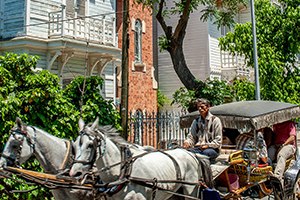 Horses, Phaetons and the Princes’ Islands
Horses, Phaetons and the Princes’ Islands
Halim Bulutoğlu
There are no records regarding the date when horses were introduced to the Prince’s Islands of İstanbul. However, it is certain that donkeys came before the horses. We see that during the 2 thousand years of settlement on the islands donkeys were always present. The history of horses on the Princes’ Islands begin with the phaetons. When the islands became summer resorts in the 19th century well-to-do families moved in. Phaetons which were few in number in earlier times became widespread in time and became an important element of the island life in Heybeli, Burgaz and especially the Big Island.
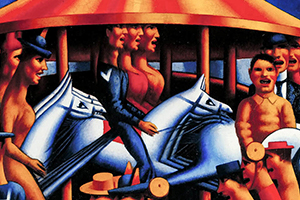 Carousel, The Merry Days of Childhood
Carousel, The Merry Days of Childhood
Umut Nişancı
As I wander about my memories of my childhood most of the time I feel like as I am riding on the carousel. Maybe in those times, I thought that the big life journey full of uncertainties ahead would be filled with merry time like we had on the carousel. It seemed as if as time passed we would be in the same age and the carousels would safely go round and round in the places where they always are in an infinite movement accompanied by sweet melodies.
 Chess and the Knight: Gökyay Foundation Museum of Chess
Chess and the Knight: Gökyay Foundation Museum of Chess
Akın Gökyay entered Guinness Book of Records in 2012 with his collection of chess sets which he collected from all around the world for more the 40 years. This rich collection is made up of lots of very precious pieces. Gökyay initially established a foundation and later a museum in order to protect his collection. We talked with him about his chess sets which turned from a hobby into a passion and about the museum he founded.
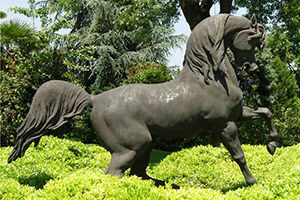 From the Mansion with the Horse to the Sakıp Sabancı Museum This mansion
From the Mansion with the Horse to the Sakıp Sabancı Museum This mansion
This mansion took its name from the horse statue, 1864 work of the French sculpture Louis Doumas, and nowadays it is being used as the Sakıp Sabancı Museum. Very precious works of calligraphy, Qurans, various prayer books, imperial berats and fermans, hilyas and various historical calligraphic works are being exhibited.
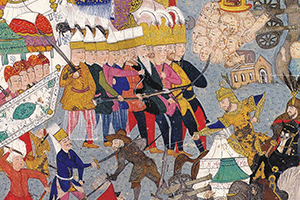 Horse Figures in Ottoman Miniatures
Horse Figures in Ottoman Miniatures
Ali Nihat Kundak
This mansion took its name from the horse statue, 1864 work of the French sculpture Louis Doumas, and nowadays it is being used as the Sakıp Sabancı Museum. Very precious works of calligraphy, Qurans, various prayer books, imperial berats and fermans, hilyas and various historical calligraphic works are being exhibited.
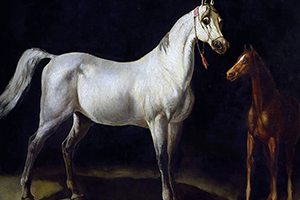 Horse Paintings of Abdulmejid Effendi
Horse Paintings of Abdulmejid Effendi
When Aldulmejid II was entrained on the Orient Express he left his gray horse, Hayyam behind with all the other splendid memories of the past. The gray horse was considered as the property of the dynasty. It was sent to the Halkalı Agriculture School and then to the Stud in İnanlı. Later, it produced many foals that won races. Hayyam was the last horse of the empire that wandered in the streets of İstanbul.
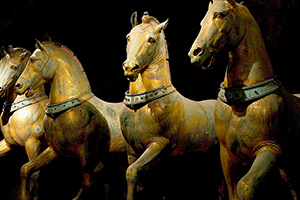 The Horses of St Marco (the Quadriga of Lysippus) from Constantinople to Venice
The Horses of St Marco (the Quadriga of Lysippus) from Constantinople to Venice
Önder Kaya
When you talk about Venice which is one of the most important touristic places lagoons, gondolas and Piazza St Marco comes to mind. In this square, which is identified with the pigeons flying to the sky in postcards the statue of four horses which is one of the most distinct works of art strikes the eye with its splendor. These statues hade been kidnapped from Constantinople to Venice just after the sack of Constantinople in the Fourth Crusade in 1204.
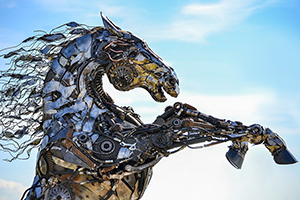 The Metal Horses of Cem Özkan: Mercury and Venus
The Metal Horses of Cem Özkan: Mercury and Venus
Cem Özkan is a genius sculpture who gets inspired from the nature and uses pieces of scraps as materials. His emotions and imagination is reflected on the materials he bought from scrap dealers and he brings out admirable statues with his welding machine. Özkan got a lot of attention from stars from his enchanted world, which are called Mercury and Venus. He stands out to be an important representative of this technique not only in Turkey but all around the world.4
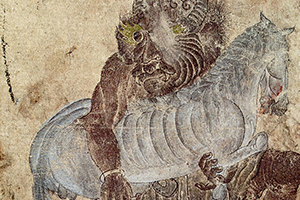 The Horses of Master Siyah Qalam
The Horses of Master Siyah Qalam
Mustafa Altun
There is no doubt that, of all the animals that take place in the mysterious drawings of Siyah Qalam horses have a special status. Horse that appear in various position in various subjects were generally drawn with nomads. The horses of Siyah Qalam were completely portrayed in daily life grazing, with their owners etc. and with this feature they hold a special place in Turkish art.
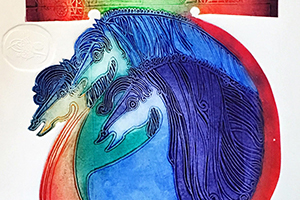 Süleyman Saim Tekcan and At’nağme (Song of the Horse)
Süleyman Saim Tekcan and At’nağme (Song of the Horse)
Gül Sarıdikmen
Among Turkish artists Süleyman Saim Tekcan is the leading one who is identified with horses. He was interested in horses since he was a little boy. His horse paintings are almost like a talisman, an amulet. The artist assigns a holiness to the horses and tries to portrait aesthetically their strong appearances. Horses and calligraphy has an important place in the art of Tekcan.
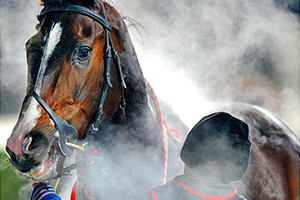 Horse Photography
Horse Photography
Kadir Çivici
Horses are creatures of aesthetics. That is why they were one of the most important themes of plastic arts throughout history. This is the same in the art of photography that has entered our lives in the modern ages as well. Kadir Çevici has been taking photos of these creatures with legendary beauties. However, there are some important key points when working with horses.
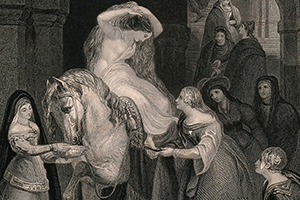 The Ride of Lady Godiva
The Ride of Lady Godiva
In the 11th century England Leofric who was the Earl of Mercia imposed heavy taxations on his tenants. The people got to the point of revolting but they helplessly had to endure the situation. Lady Godiva, the wife of Leofric, who had become famous for her beauty and piety was very sorry for this. At last, she takes the side of the public and challenges her husband.
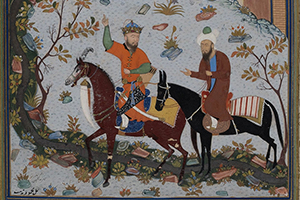 The Blessed Horses of Hayyam
The Blessed Horses of Hayyam
Erkan Göksu
T he most colorful rituals in old newrous celebrations are the gifts presented to the Persian sultans. As the gifts vary from wheat to gold, rings to swords, pens, arrows and bows to eagles and to wine; the list continues with mysterious stories peculiar to the East and stories that advice merit and loyalty. When it is the horses’ turn the story evolves into a fairy tale. The story of the horses of Hayyam begins a parade that leaves a sweet taste on the readers’ mind.
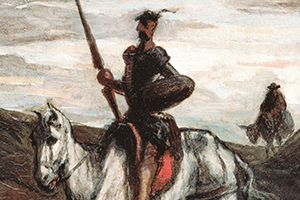 Rocinante
Rocinante
Özlem Kumrular
You can not think of Don Quixote without Rocinante or Rocinante without Don Quixote. They are almost like a Centaurus, a mythological creature that is half human and half horse. In this most widely read and translated fiction in the entire world the horse that is in the memories of everybody other than the Trojan horse is the companion of Don Quixote which is with him in all of his adventures.
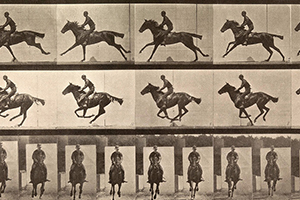 The Birth of Cinema from Photographs of Horses
The Birth of Cinema from Photographs of Horses
Murat Gür
The invention of Eadweard Muybridge who was famous for his photos of the Yosemite Valley, which is one of the wonders of nature, opened the way for the cinema. Muybridge was working on models in motion and wanted to get sharp images. At last, his trials yielded a prize. Muybridge succeeded in taking photographs of all of the phases of movements of a galloping horse. With the help of a mechanism that he created, called as the Zoopraxiscope, he was able to make these photographs to be in motion.
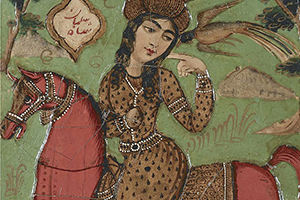 Dreaming of a Horse Means the Fulfillment of Your Wishes
Dreaming of a Horse Means the Fulfillment of Your Wishes
Erdem Sarıkaya
When you look at the entire corpus of works on dream interpretation in Islam you see that horses in dreams are elements that are given both positive and negative meanings. The aforementioned interpretations agree on the point that a person who sees horses in his dreams will beat his enemies; get more livelihoods, more honor, reach higher ranks and get more properties. In these interpretations the physical characteristics of the horse in the dream and the relation of the dreamer with the horse symbol is also evaluated. It is very common to encounter the horse motive in literary dream texts.
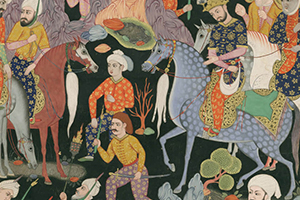 Imaginary Horses of Nef‘î
Imaginary Horses of Nef‘î
Leyla Alptekin Sarıoğlu
Rahşiye which is a literary term that is encountered only in Turkish literature is the kind of kaside and mersiye written for horses. In the prologue, the poet talks about horses, names of horses and characteristics of horses. Essentially, rahşiyes that describes pure bred horses is the outcome of description of “Burak” and “Refref” in miraciyes. Nef’i is one of the important poets for this genre.
The Horse that was being Whipped and Miserable Übermensh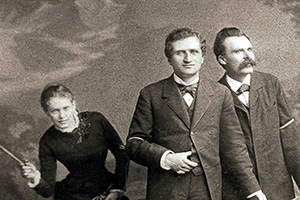
Osman Çakmakçı
The well known philosopher Nietzsche identifies himself with the horse that was being whipped; suffers the agony as if he is in the place of the horse because the horse that was being whipped is in fact the humanity itself. It is the human being that has a burden more than he can carry. What is more, nobody put this burden on him, on the contrary he put himself in for it.
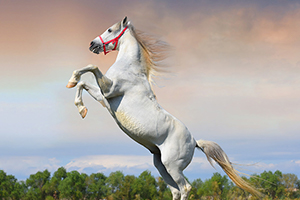 Symphony for the Horse
Symphony for the Horse
Atakan Yavuz
It is a known fact that poet Necip Fazıl was fond of horses and took great pleasure from watching horse races. The poet sees that the horse, among all other creatures, is the most close one to humans. This book contains topics on many subjects from the history of horses, the place of horses in the fairy tales, folklore, arts and literature, to their importance to Turks and perception of them in İslam. Moreover, horse is described poetically in symbolic aspects peculiar to the world of the poet.
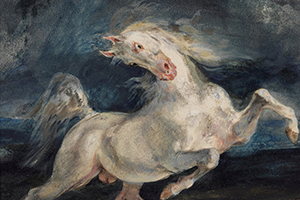 Two Stories about two Horses in Turkish Literature: the Dervish and the Deboner
Two Stories about two Horses in Turkish Literature: the Dervish and the Deboner
Abdullah Uçman
The heroes of the two stories chosen from the two great names in modern Turkish literature, Ahmet Hamdi Tanpınar and Haldun Taner are horses. The horses described in these stories are compatible with the names they were given. Dervish which is the horse characterized by Tanpınar is an abstemious horse. The horse in Taner’s story, Kalender, is just like his name: rugged and humble.
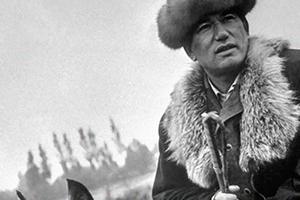 Break your Chain Gülsarı!
Break your Chain Gülsarı!
Osman Özsoy
In the post war era naïve Kirghiz youth was struggling against both the nature and authorities of the communist party that were exploiting them. Each of them were coming in terms with their pasts and making efforts for establish a judicious world. Aytmatov wrote a legend about the ambler of the steppes in the person of the hero of the novel, Gülsarı. Gülsarı which is running continuously throughout the novel is actually running after the long gone beauties of the past.
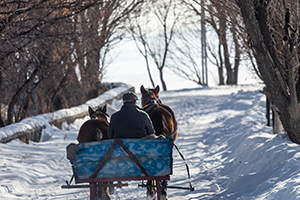 Idioms on Horses in the Kars Region
Idioms on Horses in the Kars Region
Mahir Aslan
When you investigate different local expressions particular to different cultures in different regions in Anatolia, you see that there is a rich cultural accumulation regarding the horses. The idioms presented in this article have been compiled from the Boyuntaş (Develer) village in the Akyaka province of the city of Kars.
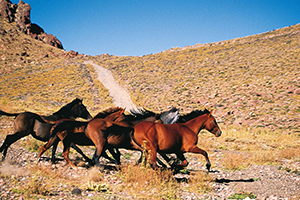 They call it “The Bay Mare”, a Jade
They call it “The Bay Mare”, a Jade
Efnan Dervişoğlu
T he Jade (Yılkı Atı) is the debut novel of Abbas Sayar. Sayar was born in Yozgat in 1923 and won the TDK Novel Prize in 1973 with the novel“Çelo” (1972) and then won the Madaralı Novel Prize with his 1974 novel “Can Şenliği”. Abbas Sayar owes much of his fame to“Yılkı Atı”. The story of the Bay Mare who was very old that she was no longer able to do any work and was left in the nature in the winter since her maintenance would be a burden.
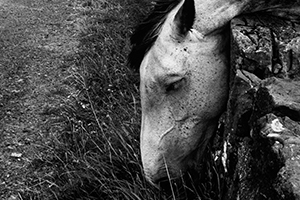 The Wandering Dervish of Asphalt Roads
The Wandering Dervish of Asphalt Roads
Ömer Erdem
Turks owe their taking hold on not only in the Asian steppes but also in the Anatolian geography to two creatures: the horse and the goat. As for the horses “the thousand years of golden age” is unfortunately over. Now automobiles work on the asphalt roads of Anatolia. The way stations which were transited with blood, sweat and voices of horses are being crushed and vanishing under the noises of engines. Despite everything horses still hit the roads as the wandering dervishes of the modern world.
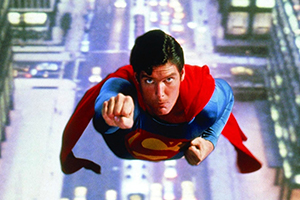 A Superman Story
A Superman Story
Göknur Karaduman
Christopher Reeve was a very successful who was well known worldwide for his outstanding performance in the Superman movies. Her was active in various kinds of sports and a devoted equestrian sportsman. His life changed upside down when his horse refused to make a jump in a race in 1995. He fell off his horse and was left quadriplegic. During the years after the accident when he struggled to continue his career as an artist and work for the well being of the paralyzed people he learned the real meaning of being a hero.
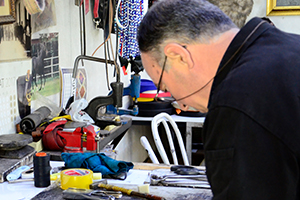 İhsan Bülücük: “The Saddler is the Tailor of a Horse”
İhsan Bülücük: “The Saddler is the Tailor of a Horse”
Saddlery is an artisanship that comprises of making the harness sets; other tools and equipments of mount and draught animals by making use of leather materials. Though it was one of the most respected artisanships in the past, unfortunately nowadays it is heading up for the last roundup. İhsan Bülücük is one of the last saddler masters.


